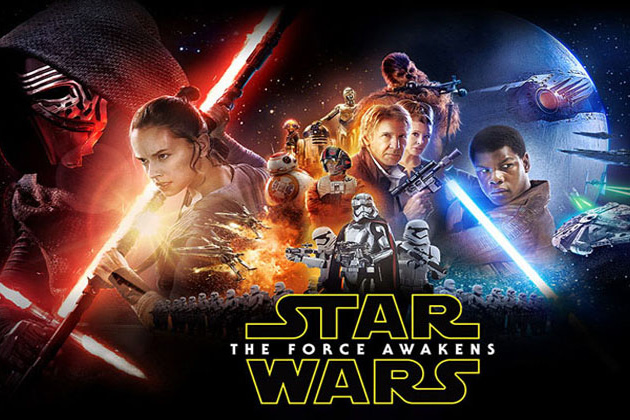Star Wars: Has the Force Reawakened?
Today is a momentous day for geek culture: Star Wars: The Force Awakens has officially released, and fans young and old are descending to theaters in its wake. Since the movie has taken a page out of the Black Friday rule book and began showings in my area yesterday at 7 pm, I had the good fortune of catching the movie last night.
With a new director, new production company, and a whole new story to tell, TFA had its work cut out for it, especially with passing the George Lucas torch onto J. J. Abrams. It largely delivers on all of its potential and promise, marrying character, story, nostalgia, and technology in a seamless way that feels like the natural culmination of all the previous movies. The story is a return to the greatness of the original trilogy. The CGI is reminiscent of the prequels, but with the grounding and “used universe” feel of the original set. Beloved characters (and actors) return for a hearty dose of nostalgia, but they are also integral to the story being told on the screen. They bridge the gap between the timelines and set up a new cast to take over our hearts and imaginations as the next movies progress. In short, despite some confusing story elements and ill-explained concepts, Star Wars: The Force Awakens lives up to its hype and is the new Star Wars movie that fans have been waiting for (that can also bring in new fans as well). Is it perfect? No, but nothing was ever going to be.
As we delve into another installment in the Star Wars universe, it’s interesting to look back at the path that the Star Wars saga has taken to get to this point: first we had the original trilogy, which began in the middle of the story with Episode IV, then the prequels, and now the post-Han/Luke/Leia story to establish the new generation of Jedi.
Before the prequels, though, there were other new Star Wars movies making their way into the home cinema world: the “remastered” original trilogy, versions made by George Lucas to replace the theatrical films on DVD and Blu Ray releases. Normally, remastering means cleaning up damaged film frames, enhancing the color, converting to high-definition, etc. All of these changes are usually a welcome addition to bring old footage up to current viewing standards. However, Lucas went further: strapped with technological and budget constraints at the time, he wasn’t able to make his films match the vision in his head. Now, decades later, as the father of a film series that captured and defined a generation, he could write his own ticket. He could finally turn the Star Wars movies into the versions he always wanted.
What did this actually mean in practice? You can read about the list of changes and complaints to them here and here.
The problem with this endless tinkering is that Lucas is fundamentally altering the films that have been seared into people’s minds for nearly 40 years. Not only do the sets look different (and less lived-in), but the stories themselves actually change. Lucas’ reasoning for changing the “Han Shot First” scene (where Greedo is awkwardly manipulated to take the first shot in the remastered version) was that Solo wouldn’t and shouldn’t shoot first. However, that’s ending-Solo. This is opening-Solo, who needs to have someplace to change from so he can undergo a proper character arc. To say that Solo wasn’t a underhanded smuggler at the beginning undermines the transformation he goes through at Leia’s hands and heart.
Lucas is a perfectionist, and there were undoubtably limitations and movie-by-committee constraints placed on him the first time round. I can all too well imagine the gnawing that eats at his Star-Wars thoughts. Now that he can write his own ticket, and fix the movies to align more with the vision in his head, the question remains: Should he?
Creating something is a deeply personal experience, but—at some point—the creator needs to let it go and let the work breathe in the world. Creative works are ultimately conversations between the creators and the consumers distanced by time and space: creators need the consumers to fill in the blanks, see themselves in the story, resonate with the characters. That’s how you touch people.
Is it fair for Lucas to alter so beloved a thing? To tread on nostalgia and kick it in the face?
As the creator, Lucas has all the right in the world to do as he chooses. It seems to me, however, that he and the fans would have been better served if he had offered a “Director’s Preferred Edition” of the movies alongside the originals as opposed to replacing them outright. Perhaps even offer them as options on the same media, much as movies did during the transition from tube tv sets to flat screen (offering both full screen and wide screen versions). That way, both parties could be satisfied.
The biggest lesson to learn, at least from this aspiring author’s perspective, is that Lucas was forced by time, money, and technology to put forth a series of films that did not match the pictures in his head, yet they were and are cherished by many. Works don’t need to be perfect to affect people. Their stories and images just have to resonate with their audiences.
Magic can happen through us mere mortals, and we just need to get out of the way and let it.





